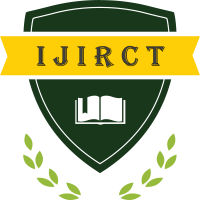A Structured Review of SaaS Security Architecture: Challenges, Models, and Research Gaps
Author(s): Dr. Sonal Sagar Boda
Publication #: 2506031
Date of Publication: 23.06.2025
Country: USA
Pages: 1-12
Published In: Volume 11 Issue 3 June-2025
DOI: https://doi.org/10.5281/zenodo.15719048
Abstract
The growing adoption of Software as a Service (SaaS) has introduced significant architectural security challenges that impact both technical implementation and organizational management. This paper presents a structured review of over 60 peer-reviewed academic sources, emphasizing publications from 2019 to 2024 while incorporating foundational studies essential to the development of secure and scalable SaaS platforms. The review focused on identifying and synthesizing security concerns associated with SaaS environments. The review applied a structured keyword-based search across multiple academic databases and selected literature based on relevance to SaaS security, architecture, and information security management. Key topics identified include customization, scalability, multitenancy, integration complexity, encryption, and third-party risks. To frame the analysis, the review draws on theoretical models including Model-Driven Architecture (MDA), Service-Oriented Architecture (SOA), and the Information Security Management (ISM) framework. These models support an examination of how confidentiality, integrity, availability, access control, and risk management are conceptualized in SaaS environments. The literature identified concerns related to cross-domain interoperability, limitations in controlling hosted platforms, evolving data privacy standards, and the organizational need for adaptable security practices to support SaaS environments. The findings indicate that, although SaaS provides recognized benefits in scalability and operational efficiency, the existing literature presents a fragmented and uneven treatment of its architectural security challenges. This review contributes a consolidated theoretical perspective on SaaS security architecture and highlights gaps in integrating organizational governance with architectural decision-making. The study concludes by recommending future research focused on empirically validating security frameworks, developing standardized assessment criteria, and exploring interdisciplinary approaches to secure SaaS system design.
Keywords:
Download/View Count: 81
Share this Article
